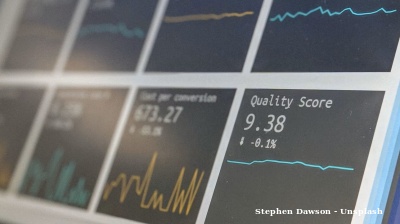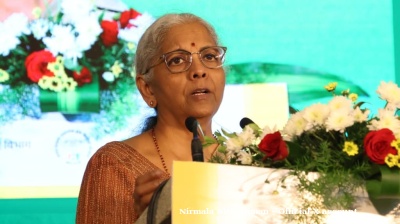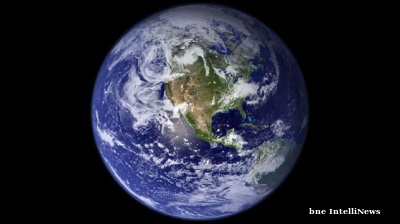Ukraine’s despair index has tumbled to 61.3, one of its worst results in the last three decades, while Russia’s despair index has improved to 19.7 as of March, its best result ever. (table)
bne IntelliNews invented the despair index in a piece entitled “The poverty of nations” in 2011 as a way to better compare the pain of transition. The index is a rough measure of the amount of pain the more vulnerable parts of society in emerging economies feel during crises. Based on the more widely known “misery index”, the addition of inflation and unemployment, bne IntelliNews added poverty levels to the indicator to better reflect the hardships that many emerging markets suffer.
As a result, the index is especially good at indicating the amount of pain felt by the bottom third of a society in, for example, an oil-rich country such as Russia, where the billions earned from exports artificially push the aggregate indicators up to make them look richer than they are at street level.
An ideal despair index should score below a value of ten if residual indicators are taken into account: inflation (2%) + residual unemployment (4%) + poverty (0%). Unfortunately, while 2% inflation and 4% unemployment are regularly reported, no countries have ever managed to eradicate poverty, which runs at least 12% in the developed world and averages in the mid-teens or above in most developing countries.
Of course, where you set the bar for poverty makes a big difference and each country has a different level, making direct comparisons between countries problematic. And what constitutes poverty is a subjective measure, as a poor man in Britain would be considered a rich man in India, but the perceived level of poverty has important political consequences for the government of each country, making the despair index relevant and cross-country comparisons useful, especially in countries in roughly the same development bracket.
Russian despair
Ukraine’s despair index spiked following the start of the war just over two years ago, driven up by soaring inflation, rising unemployment and increasing poverty levels, while the metric for Russia peaked in April 2022, but then rapidly fell again to normal levels.
Russia posted a despair index of 21.1 in 2021, which surprisingly put it ahead of all of Western Europe countries in bne IntelliNews’ despair index survey in May 2020, where all the EU countries were reporting results in the high-20s to mid-30s thanks to soaring inflation and high post-Covid levels of poverty as the cost-of-living crisis got underway.
The poverty line in Russia is set at RUB12,916 ($221.26) against the national average income of $765 per month in 2021 and Russia had a poverty ratio of 14.5% before the war in Ukraine started. The poverty line was adjusted up to RUB14,339 ($158.92) per month in 2023, but the weakening ruble has reduced it in dollar terms.
The initial months of the war were difficult for Russia after inflation took off, increasing the index to just over 30 in the first quarter of 2022 after inflation briefly hit 20% in May of that year and a jump in unemployment, taking Russia’s despair index up to briefly touch 42.5, but it soon fell back again after the Central Bank of Russia (CBR) took drastic action to stabilise the economy.
As Moscow’s military spending-fuelled boom got underway the number of Russians living below the poverty line began to fall and numbered 20.9mn people by the end of 2022, according to RosStat estimates.
Despite the reporting, poverty in Russia has always been relatively modest and on a par with the lower end of most EU countries, which had a poverty level of 21.7% in 2020 according to Eurostat before the various crises hit the globe and increased it.
In 2023 the economy began to boom as Putin put Russia on a war footing and all these indicators have come down dramatically. Inflation is still high, but a much more manageable 7.8% in April. Poverty has also fallen to 9.3%, Reuters reports. And it will fall further, according to Russian President Vladimir Putin, who has tasked the new government with bringing it under 8% as part of the renewed National Projects 2.1 programme.
During Putin’s re-election campaign he said poverty was still an acute problem that directly affects 9% of the population, and with the rate among large families above 30%, but he set a goal for those rates to fall below 7% and 12% respectively by 2030. He promised the state would spend at least RUB10 trillion ($110bn) on the social sector as part of his guns and butter long-term plans to develop Russia’s economy.
In the meantime, the economy is already growing strongly and real wages are rising quickly thanks to the very tight labour markets, which have also driven down unemployment to a record post-Soviet low of only 2.8%. According to the latest World Bank data, the Russian economy overtook Japan to become the fourth-largest economy in the world in purchasing power parity (PPP) terms, behind China, the US and India, in that order.
Taken together, Russia currently has a despair index rating of 19.7, its lowest level since 1991.
Even in the pre-war boom years when inflation fell briefly to a record low of 2.7% and unemployment was 2.9%, poverty remained at a sticky circa 14%, which puts the current despair index on a par with Russia’s best ever despair index performance.
As bne IntelliNews has reported, one of the quirks of this war has been that Russia’s poorest regions have been the biggest winners, as that is where most of the military factories are located. The war in Ukraine has acted to undo some of Russia’s legendary income inequality, if the Kremlin’s poverty figures are to be believed.
Ukrainian despair
Ukraine has been a lot less lucky. In 2020 before the war Ukraine’s despair index was 42.7. Unemployment was stuck at 13% and with the second-lowest average incomes in Europe, the poverty level was 27%. The good news was the National Bank of Ukraine (NBU) was one of the first central banks in Europe to anticipate the spiking prices that followed the coronavirus pandemic and smothered inflation to a remarkable 2.7% before the war started.
Assessing the situation in Ukraine today is hard, as many of the economic indicators are no longer being reported other than inflation, which was 15.5% in May but has been falling steadily for months.
No official unemployment statistics have been released since the war started and presumably Ukraine is in the same position as Russia, grappling with an acute shortage of labour thanks to the war. However, an unofficial estimate of the unemployment rate in April was 16.8%. More than a fifth of the adult population who were working before the war lost their jobs after the war started, according to the World Bank.
The labour force in Ukraine has decreased by 27% due to mobilisation, and personnel shortages are reducing productivity, which could have an impact on the country's defence capabilities. "This is a political problem that cannot be resolved with the help of allies. Labour shortages provide Russia with a strategic advantage," said Alexander Isakov, head of Russia and CIS macroeconomics at Bloomberg.
Poverty is likewise hard to measure and there have been no official data releases since Moscow’s invasion, but Ukraine was already the poorest country in Europe before the war started. In May the World Bank estimated that a third (29%, or about 9mn people) of the population is now living below the poverty line. The World Bank says 1.8mn more Ukrainians are now living in poverty since 2020, and while the situation is dire, it would be much worse if Ukraine had not received foreign aid to help pay for pensions and salaries.
Another proxy indicator of poverty – the proportion of people surveyed who have to save on food – was 17.9% in April 2024, according to the Info Sapiens research agency.
Taken together, that gives Ukraine a despair index of 61.3, a level comparable to all of the worst crises of the last two decades.
Comparing countries
None of the despair indices today are anything like those recorded in the first years after the collapse of the Soviet Union. All of the countries in our sample have emerged from that chaos and are now simply trying to build on the progress made.
For example, life for Russians at the start of the 1990s was truly horrible. The International Monetary Fund-sponsored "shock therapy" introduced in 1992 freed state controls over prices overnight and sent the prices of staples to the moon: inflation reached a peak of 2,333% in December of the same year (that's 6.4% a day, more than what most countries endure in a year). Unemployment was relatively mild at 5.7% in 1993, but the 27.9% of the population living in poverty gave a despair index score of 2,367, which is off the scale when compared with those of any and all other emerging markets, the worst of which saw their levels reach the lower hundreds at the worst.
The results for other former Warsaw bloc countries were an order of magnitude lower, but even countries such as Hungary and Poland had despair scores of well over 200. Poland's proximity to Western Europe and economic reforms brought the despair index down to 37 by the time it joined the EU in 2003 but even Russia had wrestled its score down to 28 that same year.
Putting aside the danger of comparing apples and oranges, how does Russia’s despair index of 19.7 and Ukraine’s of 61.3 compare against the other countries of the world?
US: The poverty rate in the US was 11.5% in February – more than Russia’s poverty rate now – unemployment was 3.9% and inflation was 3.4% in April, giving it a despair index of 18.8 – slightly better than Russia’s result and better than almost all of the EU countries.
However, analysts worry that the US population is living on borrowed time, as the cost of living continues to climb and the increases are being financed by burgeoning credit.
Data released by the Federal Reserve Bank of New York in April shows that people have never taken out loans so quickly as they are doing at the moment. At the end of the first quarter US household debt reached a record level: total debt has climbed to $17.69 trillion, a rise of $184bn, or 1.1%, compared to the fourth quarter of 2023, as people increasingly max out their credit cards; about one in six credit card users utilises at least 90% of their available limit.
In Russia's credit cards are also fuelling a consumer boom that has worried the CBR. “This significant growth [in consumer borrowing in the first quarter] may be linked to increased household incomes, which have sustained high consumer activity. The primary driver of this growth is the credit card segment, where interest rates have traditionally been higher and thus less sensitive to changes in market rates,” the CBR said in its latest bank sector assessment. But the regulator has introduced new macroprudential limits that have tightened the borrowing conditions on credit card use in an effort to pop a potential credit card bubble before it forms.
China: Economic growth has slowed in China, which is grappling with several macroeconomic headaches, but it also has a modest despair index. Inflation was a very low 0.5% in April and unemployment was a modest 5%. Like elsewhere, measuring poverty in China is difficult, but the World Bank estimates China’s poverty rate will continue its rapid reduction in recent years thanks to the ongoing economic transformation, and it will fall to 15.3% this year before shrinking further to 13.6% in 2025.
Taken together, that gives China a despair index of 19, a shade better than Russia’s level and just behind the US level.
India: Indian poverty is also declining and was 11.3% in January, although the government claims that it has fallen to only 5% in the last month as part of a hotly contested general election. But with a poverty line set at only $12 a month, what passes for the middle class in India would be labelled as being in deep poverty for most of its emerging market peers. Unemployment was an average of 7.6 in March, and inflation 4.8%.
Taken together that gives India a despair index of 23.5, better than the majority of EU countries.
Europe and Eurasia: The picture varies widely in Europe and Eurasia but despair indices range between 20 and 40 for most of the countries in this region.
From the Western European leaders all of the big three of France, German and UK have despair indices of 24.3, 25.1 and 25.4 respectively.
In Central Asia Kazakhstan and Uzbekistan have despair index values of 24.6 and 28 respectively, where none of the three variables are extreme but all are at elevated levels, as they are still in the earlier stages of transition.
In the Caucasus, oil-rich Azerbaijan is the outstanding leader with a despair index of only 12.1 – the lowest result by far in our sample group. What pulls the score down is the government’s claim that poverty is only 5.5%, also reported by the Asian Development Bank (ADB), an extremely low level given that almost all countries in both the developed and developing worlds struggle to get the rate below 10%. But with a poverty rate of $3.65 and a government flush with oil revenues, social support is available for those that struggle. Georgia and Armenia have more typical scores of 29.9 and 36.7 respectively. Armenia has been reporting deflation in recent months, but it continues to carry the burden of a high level of poverty for 24.8% of the population that drags its result down.
Turkey is also a standout poor performer with a huge despair index score of 91.5 – usually a score only seen in the midst of a deep crisis and by far the highest result in our sample group. The problem in Turkey has been runaway inflation, which is currently 68.5%. Poverty and unemployment are both relatively modest. After ignoring inflation in recent years, Turkish President Recep Tayyip Erdogan has recently appointed a more conservative team to run the Central Bank and Finance Ministry, which are in the process of trying to tame inflation, with some success.
Amongst the Central European countries, Czechia is doing best, and with a despair score of only 18.1 this is the second-best result in our sample. Czechia boasts modest poverty and low inflation and unemployment, although the country is still struggling to recover from the shocks of the polycrisis. Poland would score in the low 20s, which is the result of the better performing economies report, but is suffering from high unemployment of 15.3%. The three Baltic states would do well but all three report worryingly high poverty rates of around 25%.
In Southeast Europe nearly all the countries post significantly higher despair scores of between 35 and 45. Earlier in the development cycle, all these countries suffered from similar problems of higher levels of poverty in the 20s, higher unemployment levels of up to 13%, although almost all these countries have tamed inflation in the last year.
Features

Agentic AI becomes South Korea’s next big tech battleground
As countries race to define their roles in the AI era, South Korea's tech giants are now embracing “agentic AI”, a next-generation form of AI that acts autonomously to complete goals, not just respond to commands.

Iran's capital Tehran showcases new "Virgin Mary" Metro station
Tehran's new Maryam metro station honours Virgin Mary with architecture blending Armenian and Iranian design elements in new push by Islamic Republic

Indonesia’s $80bn giant seawall
Indonesia’s ambition to build a colossal seawall along the northern coastline of Java has ignited both hope and heated debate. Valued at around $80bn, the project aims to safeguard the island’s coastal cities from tidal floods and erosion.

The Asian nations backing the Russian war effort – from India to Taiwan, China to Indonesia
While many Asian nations have quietly distanced themselves from Moscow in a bid to fall into line with US or European allies, several continue to engage with Russia, providing varying degrees of support that help sustain its military campaign.




